Effect of Speciation Transformation of Cadmium (Cd) on P-Wave Velocity Under Moisture Regulation in Soils
Abstract
1. Introduction
2. Materials and Methods
2.1. Sampling
2.2. Preparation of Soil Samples with Different Cd Sorption Levels
2.3. Preparation of Soil Samples with Different Moisture Contents
2.4. Acoustic Measurement Method
2.5. Eh and pH Determination Methods
2.6. Extraction Methods of Heavy Metal Forms
3. Results and Discussions
3.1. Effect of Soil Moisture Content on P-Wave Velocity
3.2. Variation in P-Wave Velocity with Cd Concentration
3.3. Coupled Effect of Soil Moisture Content and Cd Adsorption Level on P-Wave Velocity
3.3.1. Speciation Transformation of Cd with Different Moisture Contents
3.3.2. Evolution of pH and Eh of Soil with Different Moisture Contents
3.3.3. Relationship Between pH and Eh and Ex Form of Cd in Soil
3.3.4. Relationship Between P-Wave Velocity and EX Contents
4. Conclusions
- (1)
- P-wave velocity is found to decrease with increasing soil moisture content. However, under the same moisture change conditions, the reduction in P-wave velocity in Cd-contaminated soil is more pronounced than in nearly uncontaminated soil. This observation suggests that factors in addition to the moisture content significantly influence the P-wave velocity;
- (2)
- An increase in soil moisture content facilitates the transformation of Cd from more stable forms (FMO, CAB, and ORB) to a less stable form (EX), thereby enhancing the ecological risk of Cd in the soil. The analysis of the transformation mechanism reveals that pH is highly significantly negatively correlated with the EX content, while Eh is highly significantly positively correlated with the EX content. These correlations indicate that pH and Eh changes are the primary drivers of Cd speciation transformation;
- (3)
- A significant correspondence exists between the EX content and the relative values of the P-wave velocity. The linear regression analysis demonstrates that the coefficients of determination (R2) for the fitted equations are consistently above 0.9 for the same adsorption amount, indicating a strong linear relationship. This finding provides a theoretical basis for utilizing P-wave velocity as an indicator for monitoring the soil EX content under fluctuating external moisture conditions;
- (4)
- The variation in P-wave velocity is influenced by the synergistic effects of moisture conditions and Cd levels in the soil. Changes in water content lead to the speciation transformation of Cd, causing the disintegration of pre-existing complexes and colloids and the disruption of microaggregates. These alterations result in increased soil porosity, which consequently contributes to a decrease in P-wave velocity.
Author Contributions
Funding
Institutional Review Board Statement
Informed Consent Statement
Data Availability Statement
Acknowledgments
Conflicts of Interest
References
- Ji, Y.; Zhu, K.; Lyu, C.; Wang, S.; Ning, D.; Fan, J.; Shi, L. Semiempirical correlation between P-wave velocity and thermal conductivity of frozen silty clay soil. Shock Vib. 2021, 2021, 5533696. [Google Scholar] [CrossRef]
- Kurtulus, C.; Sertcelik, F.; Canbay, M.M.; Sertcelik, İ. Estimation of Atterberg limits and bulk mass density of an expansive soil from P-wave velocity measurements. Bull. Eng. Geol. Environ. 2010, 69, 153–154. [Google Scholar] [CrossRef]
- Rahimi, M.R.; Mohammadi, S.D.; Heidari, M.; Jalali, S.H. Correlation between mineral composition and P-wave velocity, strength and textural properties of sulfate rocks in dry and saturated conditions. J. Appl. Geophys. 2021, 192, 104397. [Google Scholar] [CrossRef]
- Klimentos, T. The effects of porosity-permeability-clay content on the velocity of compressional waves. Geophysics 1991, 56, 1930–1939. [Google Scholar] [CrossRef]
- Minear, J.W. Clay models and acoustic velocities. In Proceedings of the SPE Annual Technical Conference and Exhibition, New Orleans, LA, USA, 26–29 September 1982. [Google Scholar] [CrossRef]
- Uyanık, O. Estimation of the porosity of clay soils using seismic P- and S-wave velocities. J. Appl. Geophys. 2019, 170, 103832. [Google Scholar] [CrossRef]
- Shen, J.; Lorenzo, J.M.; White, C.D.; Tsai, F. Soil density, elasticity, and the soil-water characteristic curve inverted from field-based seismic P- and S-wave velocity in shallow nearly saturated layered soils. Geophysics 2015, 80, WB11–WB19. [Google Scholar] [CrossRef]
- Luo, Y.; Shi, Y.; Huang, B. Characteristics of acoustic wave velocity of loamy soil with different cadmium concentrations. In Advances in Geology and Resources Exploration; CRC Press: Boca Raton, FL, USA, 2022. [Google Scholar]
- ISO10390:2021; Soil Quality-Determination of Ph. International Standards Organization: Geneva, Switzerland, 2021.
- Tessier, A.; Campbell, P.G.C.; Bisson, M. Sequential extraction procedure for the speciation of particulate trace metals. Anal. Chem. 1979, 51, 844–851. [Google Scholar] [CrossRef]
- Sharma, R.K.; Gupta, A.K. Continuous wave acoustic method for determination of moisture content in agricultural soil. Comput. Electron. Agric. 2010, 73, 105–111. [Google Scholar] [CrossRef]
- Gorthi, S.; Chakraborty, S.; Li, B.; Weindorf, D.C. A field-portable acoustic sensing device to measure soil moisture. Comput. Electron. Agric. 2020, 174, 105517. [Google Scholar] [CrossRef]
- Xu, Y.; Li, J.; Duan, J.; Song, S.; Jiang, R.; Yang, Z. Soil water content detection based on acoustic method and improved Brutsaert’s model. Geoderma 2020, 359, 114003. [Google Scholar] [CrossRef]
- Wu, X.; Huang, C.; Li, P.; Zhang, S.; Xu, Z. Experimental study on evaluation of density, P-wave velocity, thermal conductivity, and thermal diffusion coefficient of granite after thermal treatments by using PCA. Sci. Rep. 2024, 14, 7748. [Google Scholar] [CrossRef]
- Wren, D.K. Surficial Marine Sediment Properties: A Geophysical Investigation of Variability and Controls. Ph.D. Thesis, Bangor University, Bangor, UK, 1996. Available online: https://www.proquest.com/docview/1796799280/abstract/E87BE986E6204D3APQ/1 (accessed on 18 October 2024).
- Rassaei, F.; Hoodaji, M.; Abtahi, S.A. Cadmium speciation as influenced by soil water content and zinc and the studies of kinetic modeling in two soils textural classes. Int. Soil Water Conserv. Res. 2020, 8, 286–294. [Google Scholar] [CrossRef]
- Bradl, H.B. Adsorption of heavy metal ions on soils and soils constituents. J. Colloid Interface Sci. 2004, 277, 1–18. [Google Scholar] [CrossRef]
- Dinake, P.; Kelebemang, R.; Sehube, N.; Kereeditse, T.T.; Motswetla, O. Dynamic risk assessment of lead pollution of shooting range soil by applying the delayed geochemical hazard model—A case study in Botswana. Soil Sediment Contam. Int. J. 2020, 29, 503–515. [Google Scholar] [CrossRef]
- Jayarathne, A.; Egodawatta, P.; Ayoko, G.A.; Goonetilleke, A. Role of residence time on the transformation of zn, cu, pb and cd attached to road dust in different land uses. Ecotoxicol. Environ. Saf. 2018, 153, 195–203. [Google Scholar] [CrossRef] [PubMed]
- Xu, J.; Peng, S.; Qiao, Z.; Yang, S.; Gao, X. Binding forms and availability of cd and cr in paddy soil under non-flooding controlled irrigation. Paddy Water Environ. 2014, 12, 213–222. [Google Scholar] [CrossRef]
- Choo, H.; Jun, H.; Yoon, H.-K. Porosity estimation of unsaturated soil using brutsaert equation. Soil Dyn. Earthq. Eng. 2018, 104, 33–39. [Google Scholar] [CrossRef]
- Yang, Y.; Nan, Z.; Zhao, Z.; Wang, Z.; Wang, S.; Wang, X.; Jin, W.; Zhao, C. Bioaccumulation and translocation of cadmium in cole (Brassica campestris L.) and celery (Apium graveolens) grown in the polluted oasis soil, Northwest of China. J. Environ. Sci. 2011, 23, 1368–1374. [Google Scholar] [CrossRef]
- Wang, Z.; Yi, L.; Gao, W.; Zeng, X.; Wang, Z. Impact of inorganic anions on the cadmium effective fraction in soil and its phytoavailability during salinization in alkaline soils. Acta Ecol. Sin. 2012, 32, 7512–7518. [Google Scholar] [CrossRef]
- Li, W.; Cai, Y.; Li, Y.; Achal, V. Mobility, speciation of cadmium, and bacterial community composition along soil depths during microbial carbonate precipitation under simulated acid rain. J. Environ. Manag. 2024, 353, 120018. [Google Scholar] [CrossRef] [PubMed]
- Li, Q.; Wang, Y.; Li, Y.; Li, L.; Tang, M.; Hu, W.; Chen, L.; Ai, S. Speciation of heavy metals in soils and their immobilization at micro-scale interfaces among diverse soil components. Sci. Total Environ. 2022, 825, 153862. [Google Scholar] [CrossRef] [PubMed]
- Huang, J.-H.; Wang, S.-L.; Lin, J.-H.; Chen, Y.-M.; Wang, M.-K. Dynamics of cadmium concentration in contaminated rice paddy soils with submerging time. Paddy Water Environ. 2013, 11, 483–491. [Google Scholar] [CrossRef]
- Min, X.; Xie, X.; Chai, L.; Liang, Y.; Li, M.; Ke, Y. Environmental availability and ecological risk assessment of heavy metals in zinc leaching residue. Trans. Nonferrous Met. Soc. China 2013, 23, 208–218. [Google Scholar] [CrossRef]
- Kelderman, P.; Osman, A.A. Effect of redox potential on heavy metal binding forms in polluted canal sediments in Delft (The Netherlands). Water Res. 2007, 41, 4251–4261. [Google Scholar] [CrossRef]
- Li, S.; Wang, H.; Zhu, X.; He, H.; Ding, Y.; Guan, H.; Xu, W. Effects of soil pH and organic matter on the content of bioavailable heavy metals. J. Yunnan Norm. Univ. Nat. Sci. 2021, 41, 49–55. [Google Scholar]
- Zheng, S.; Zhang, M. Effect of moisture regime on the redistribution of heavy metals in paddy soil. J. Environ. Sci. 2011, 23, 434–443. [Google Scholar] [CrossRef] [PubMed]
- Weng, H.-X.; Ma, X.-W.; Fu, F.-X.; Zhang, J.-J.; Liu, Z.; Tian, L.-X.; Liu, C. Transformation of heavy metal speciation during sludge drying: Mechanistic insights. J. Hazard. Mater. 2014, 265, 96–103. [Google Scholar] [CrossRef]
- Ottosen, L.M.; Hansen, H.K.; Jensen, P.E. Relation between pH and desorption of Cu, Cr, Zn, and Pb from industrially polluted soils. Water Air Soil Pollut. 2009, 201, 295–304. [Google Scholar] [CrossRef]
- Ji, W.; Yang, Z.; Yu, T.; Yang, Q.; Wen, Y.; Wu, T. Potential ecological risk assessment of heavy metals in the Fe–Mn nodules in the karst area of Guangxi, Southwest China. Bull. Environ. Contam. Toxicol. 2021, 106, 51–56. [Google Scholar] [CrossRef]
- Chen, Y.; Xie, T.; Liang, Q.; Liu, M.; Zhao, M.; Wang, M.; Wang, G. Effectiveness of lime and peat applications on cadmium availability in a paddy soil under various moisture regimes. Environ. Sci. Pollut. Res. 2016, 23, 7757–7766. [Google Scholar] [CrossRef] [PubMed]
- Hong, C.O.; Owens, V.N.; Kim, Y.G.; Lee, S.M.; Park, H.C.; Kim, K.K.; Son, H.J.; Suh, J.M.; Kim, P.J. Soil pH effect on phosphate induced cadmium precipitation in arable soil. Bull. Environ. Contam. Toxicol. 2014, 93, 101–105. [Google Scholar] [CrossRef] [PubMed]
- Frohne, T.; Rinklebe, J.; Diaz-Bone, R.A.; Laing, G.D. Controlled variation of redox conditions in a floodplain soil: Impact on metal mobilization and biomethylation of arsenic and antimony. Geoderma 2011, 160, 414–424. [Google Scholar] [CrossRef]


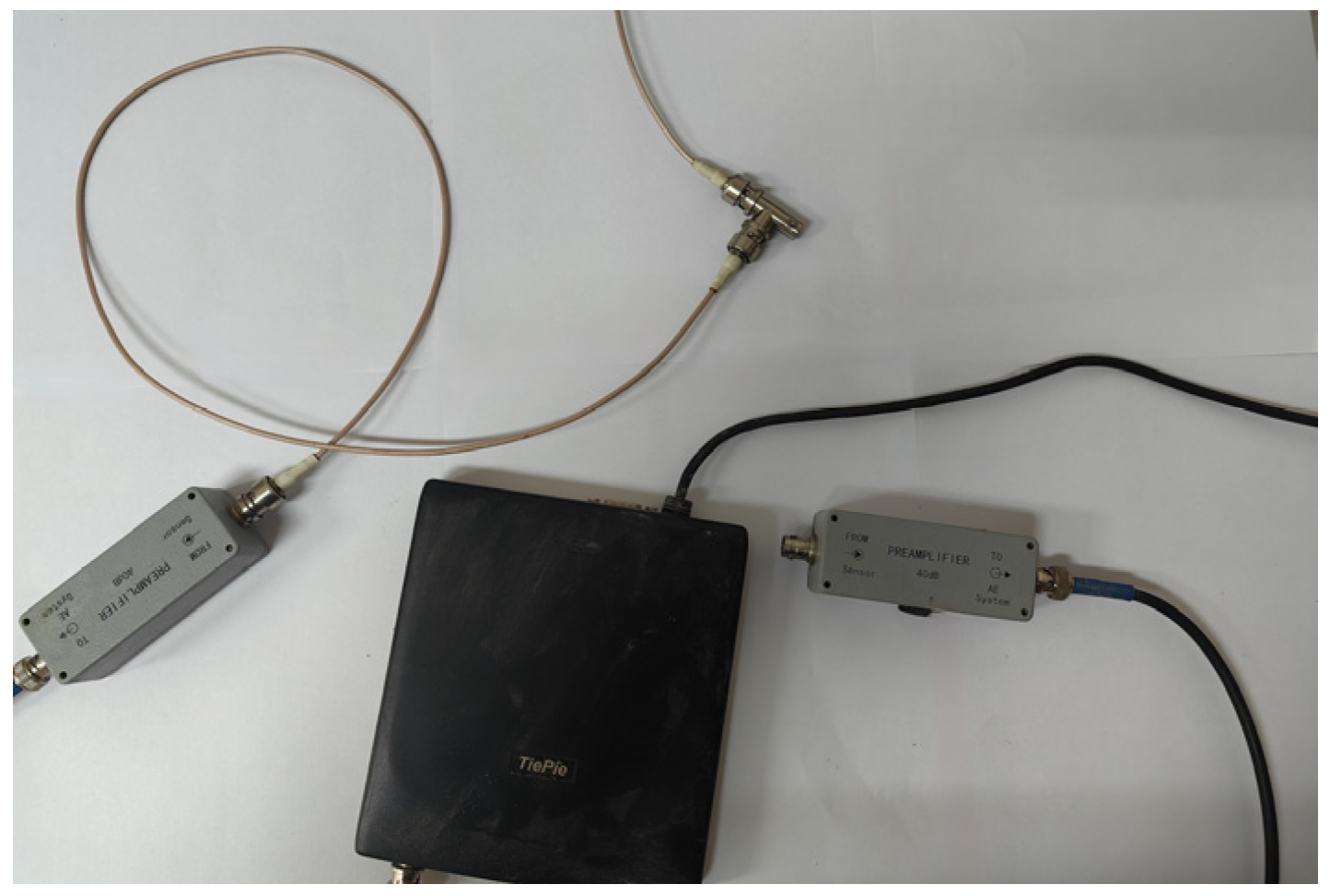
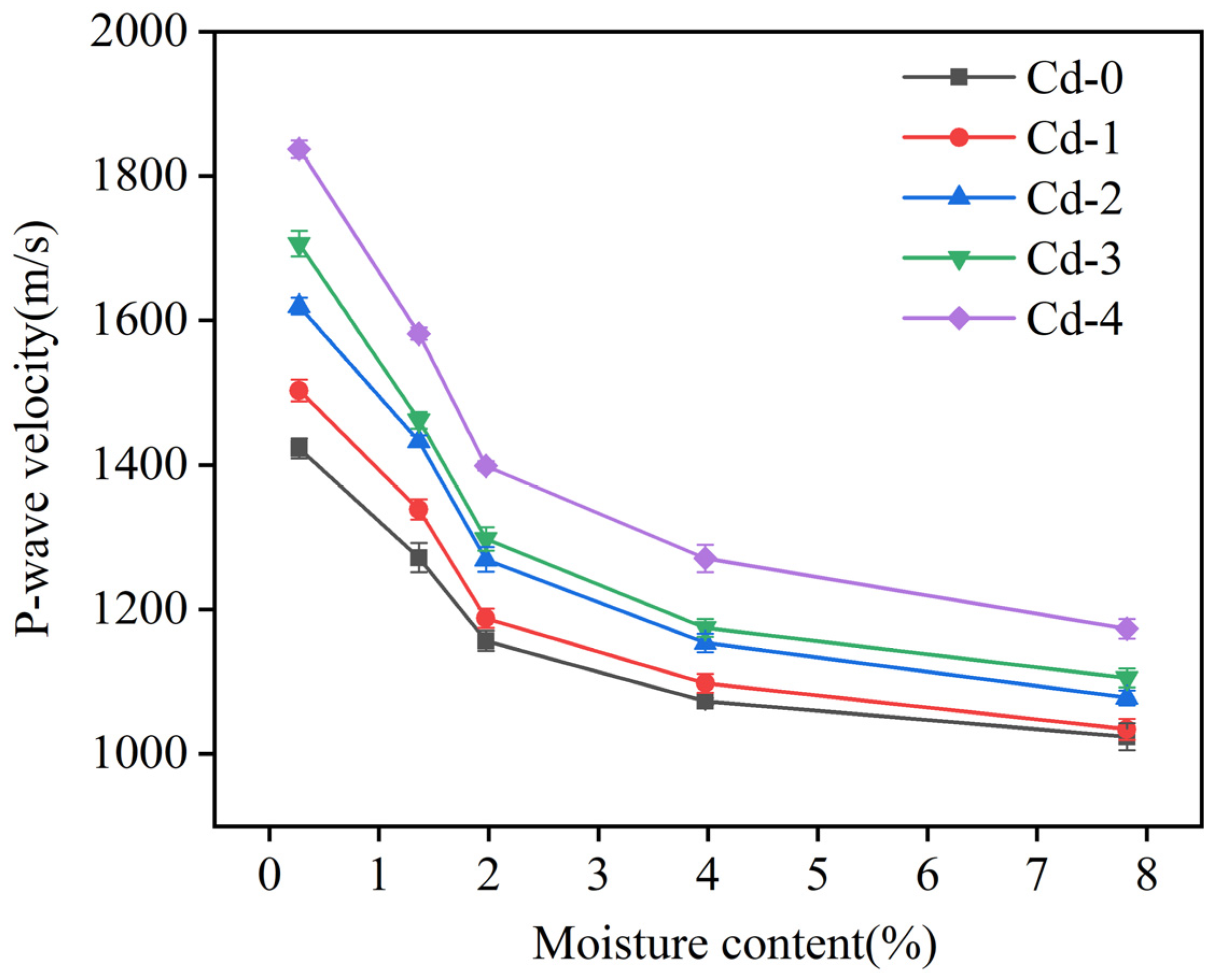
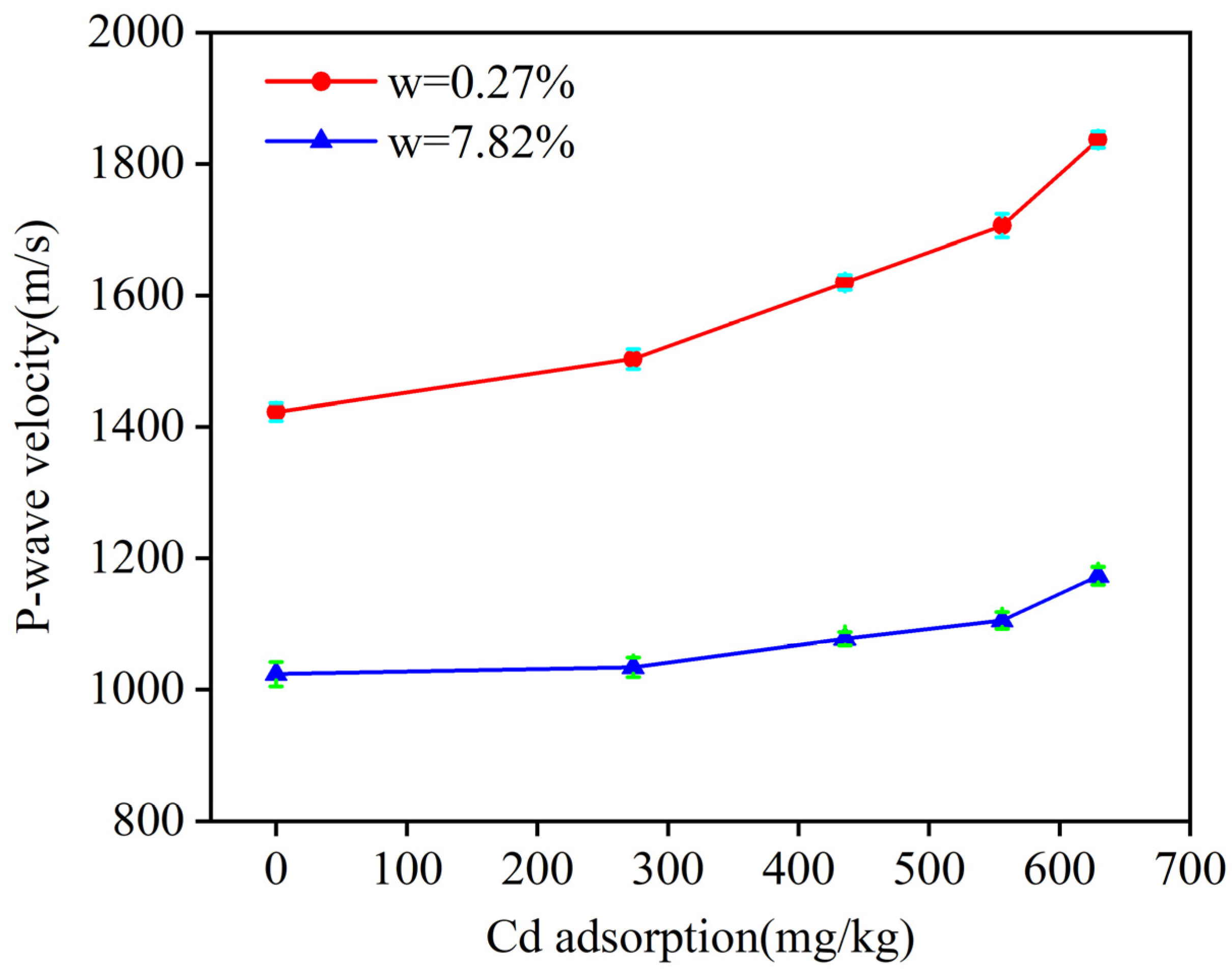
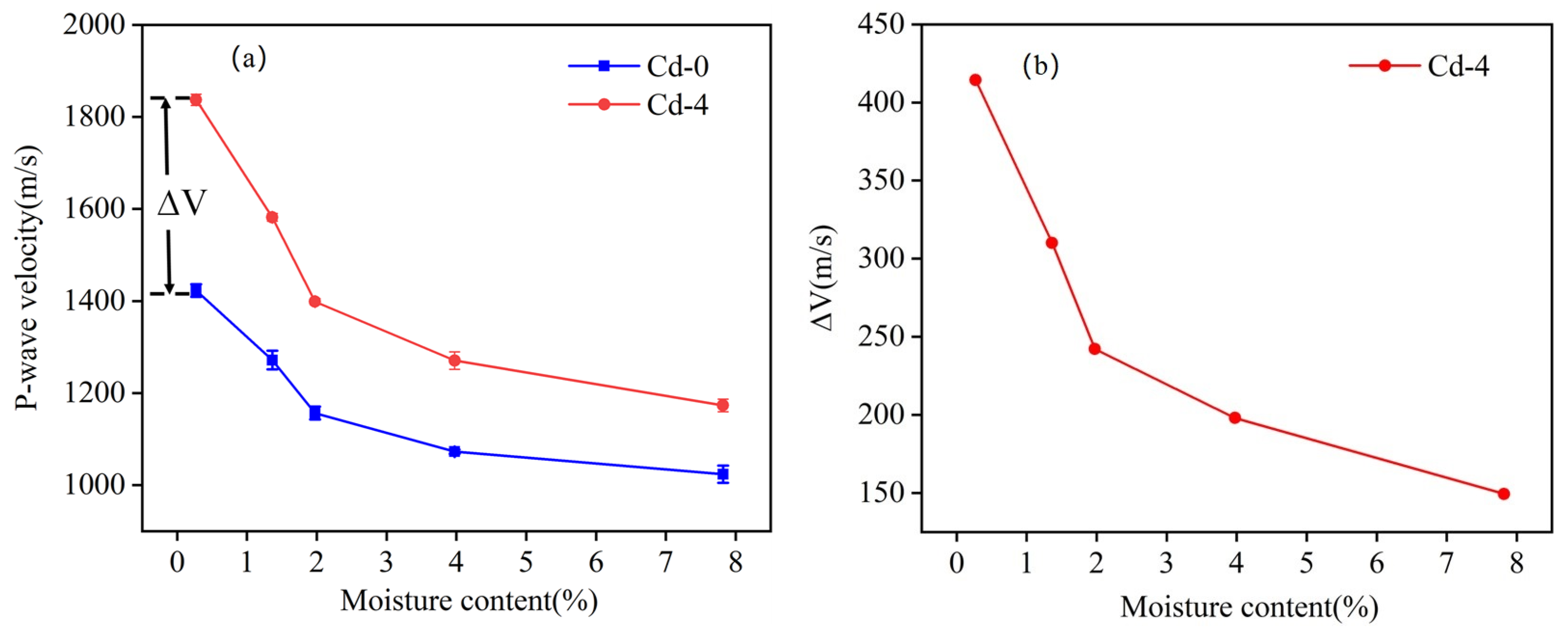
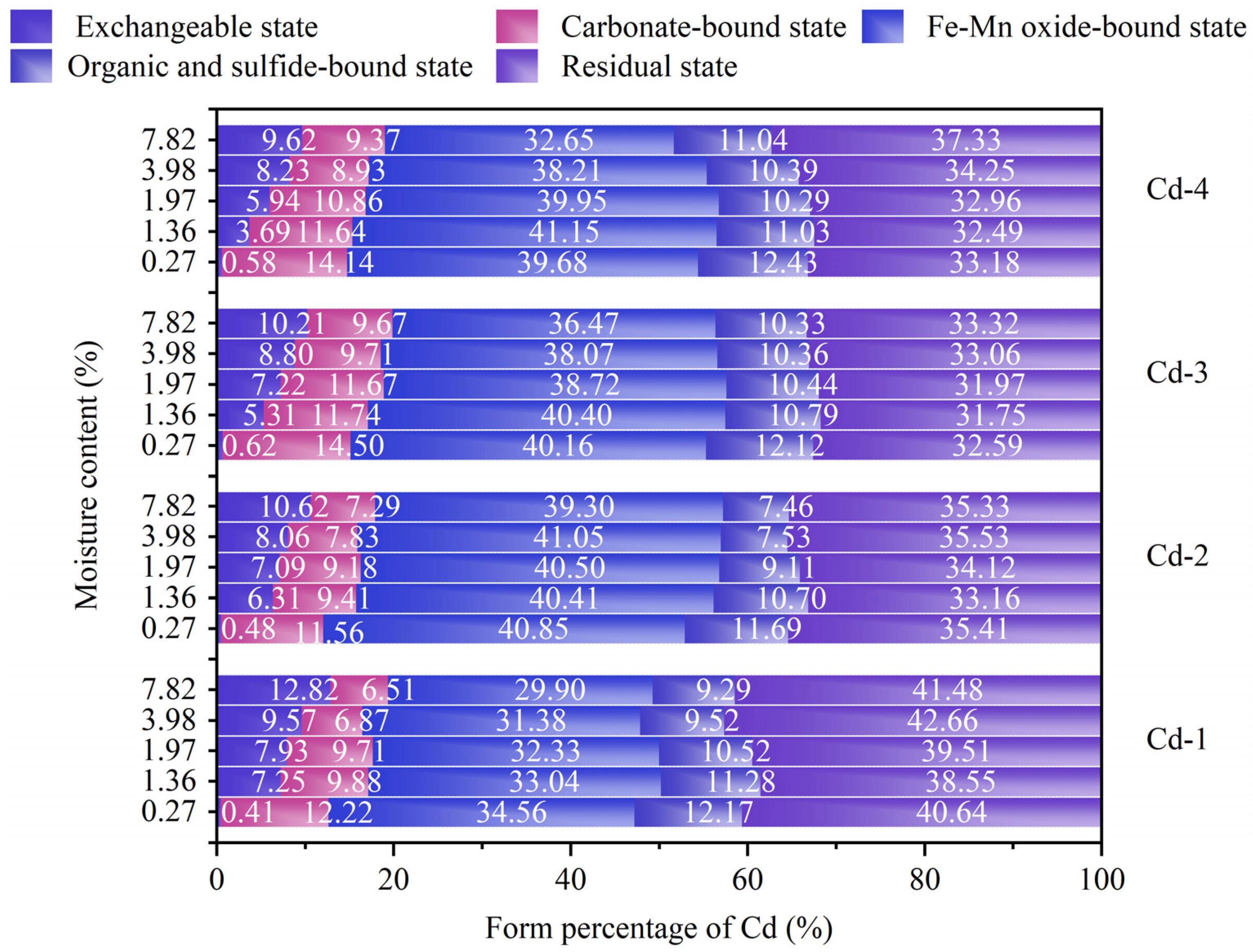
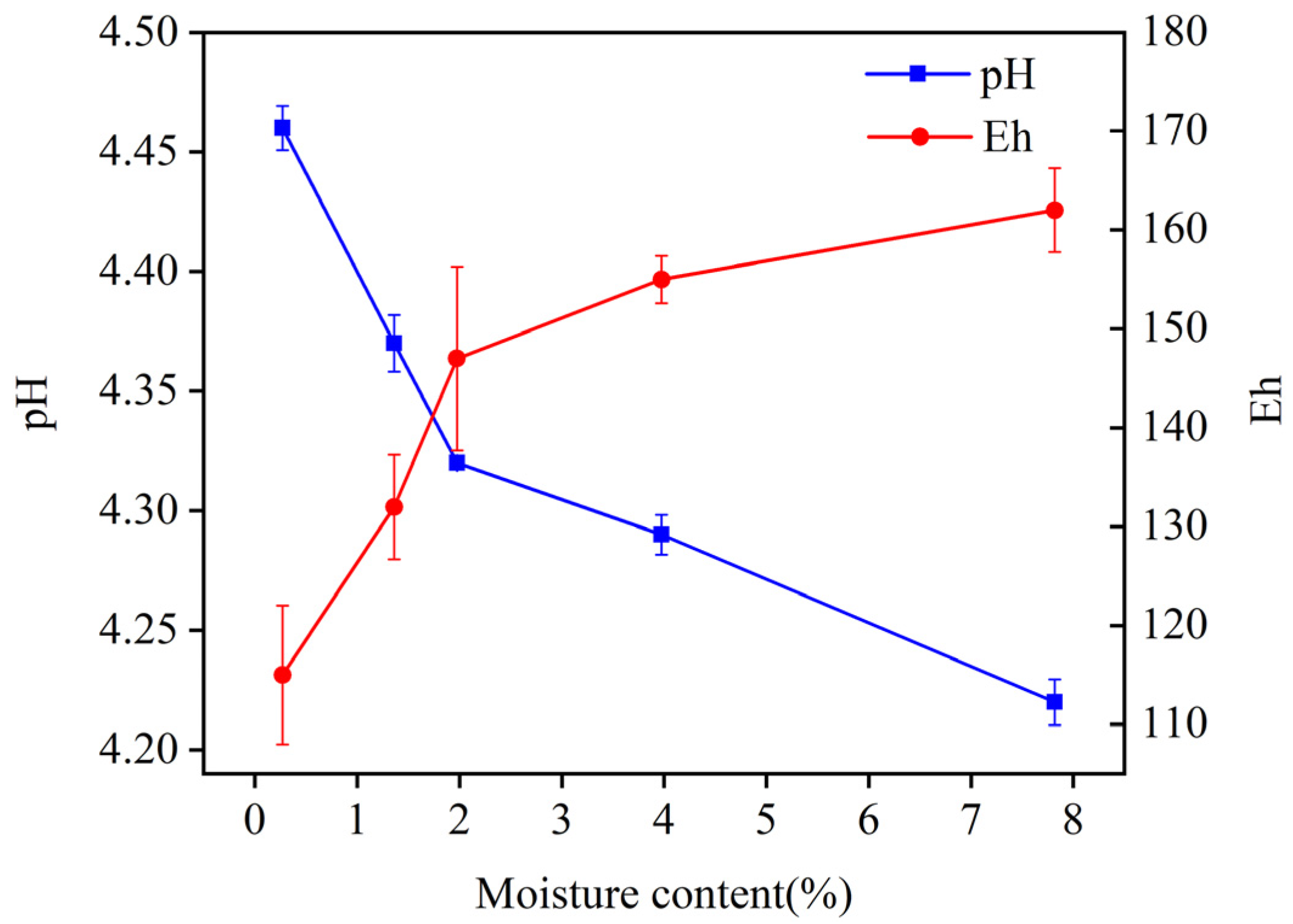

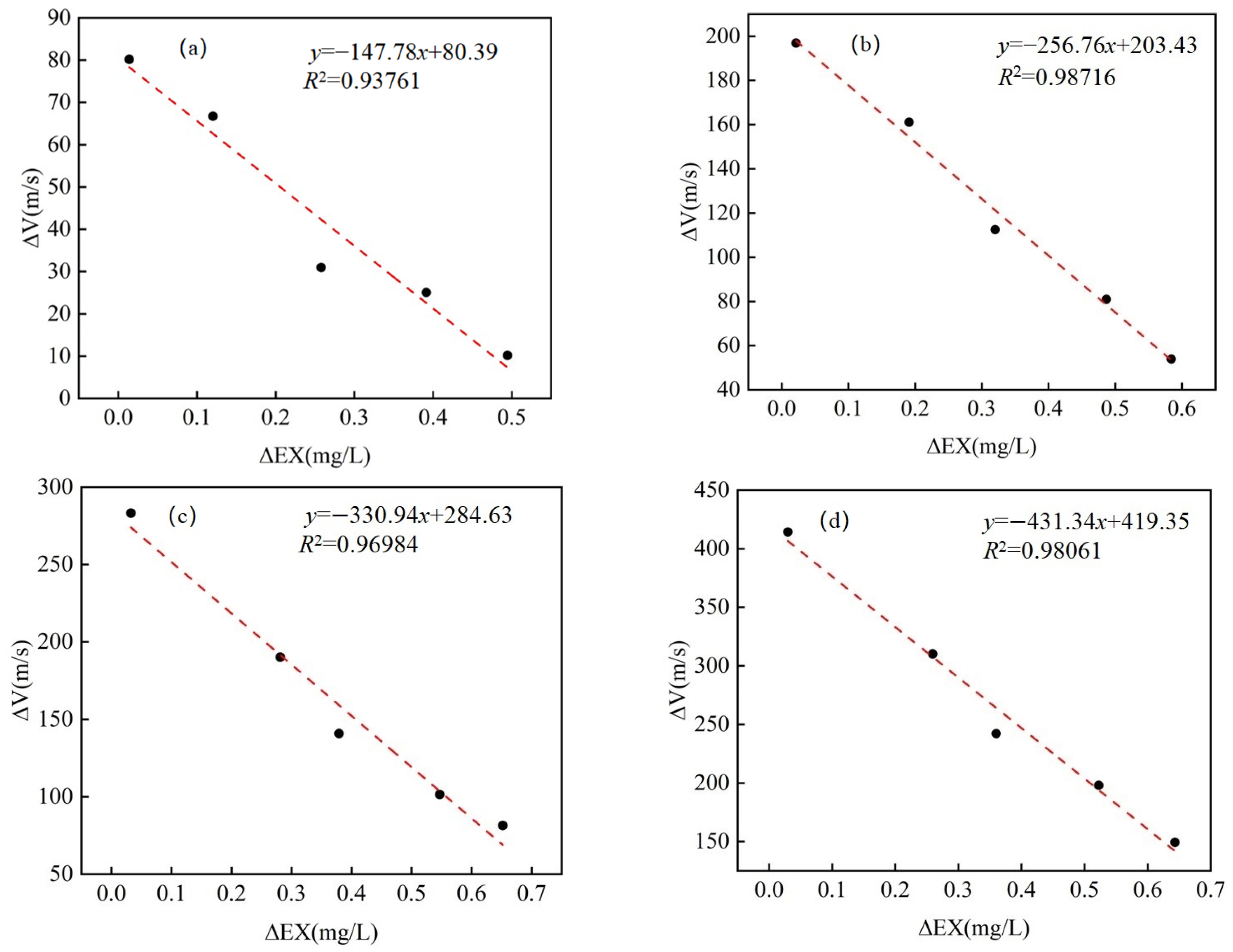

| Parameters | pH | Moisture Content (%) | Density (g/cm3) | CEC (cmol(+)/kg) | Organic Matter (g/kg) | Calcium Carbonate (g/kg) | Manganese Oxides (g/kg) |
|---|---|---|---|---|---|---|---|
| soil sample | 4.76 | 1.53 | 1.67 | 10.6 | 21.4 | 6.8 | 0.45 |
| Group | Cd-0 | Cd-1 | Cd-2 | Cd-3 | Cd-4 |
|---|---|---|---|---|---|
| Expected Cd adsorption (mg/kg) | 0 | 300 | 450 | 600 | 700 |
| Added Cd (NO3)2·4H2O(g) | 0 | 0.4940 | 0.7410 | 0.9880 | 1.1526 |
| Measured Cd adsorption (mg/kg) | 0.21 | 273.29 | 435.41 | 556.04 | 629.43 |
| Expected Moisture Content (%) | 0 | 1 | 2 | 4 | 8 |
|---|---|---|---|---|---|
| Ultra-pure water masses required (g) | 0 | 0.505 | 1.14 | 2.09 | 3.98 |
| Measured moisture content (%) | 0.271 | 1.363 | 1.974 | 3.975 | 7.819 |
| Groups | Parameter | EX | CAB | FMO | ORB |
|---|---|---|---|---|---|
| Cd-300 | pH | −0.96664 ** | 0.92749 * | 0.87717 | 0.93294 * |
| Eh | 0.97352 ** | −0.93528 * | −0.88668 * | −0.88672 * | |
| Cd-450 | pH | −0.97804 ** | 0.92588 ** | 0.92051 * | 0.92642 * |
| Eh | 0.98773 ** | −0.97525 ** | −0.89654 * | −0.89462 * | |
| Cd-600 | pH | −0.98955 ** | 0.94919 * | 0.84412 | 0.97743 ** |
| Eh | 0.98874 ** | −0.95885 ** | −0.8437 | −0.99692 ** | |
| Cd-700 | pH | −0.99149 ** | 0.96302 ** | 0.87504 | 0.98995 ** |
| Eh | 0.98741 ** | −0.97572 ** | 0.83406 | −0.98382 ** |
Disclaimer/Publisher’s Note: The statements, opinions and data contained in all publications are solely those of the individual author(s) and contributor(s) and not of MDPI and/or the editor(s). MDPI and/or the editor(s) disclaim responsibility for any injury to people or property resulting from any ideas, methods, instructions or products referred to in the content. |
© 2025 by the authors. Licensee MDPI, Basel, Switzerland. This article is an open access article distributed under the terms and conditions of the Creative Commons Attribution (CC BY) license (https://creativecommons.org/licenses/by/4.0/).
Share and Cite
Fu, J.; Zhou, H.; Luo, Y.; Huang, B.; Qing, Z.; Yan, K.; Shi, Y. Effect of Speciation Transformation of Cadmium (Cd) on P-Wave Velocity Under Moisture Regulation in Soils. Materials 2025, 18, 416. https://doi.org/10.3390/ma18020416
Fu J, Zhou H, Luo Y, Huang B, Qing Z, Yan K, Shi Y. Effect of Speciation Transformation of Cadmium (Cd) on P-Wave Velocity Under Moisture Regulation in Soils. Materials. 2025; 18(2):416. https://doi.org/10.3390/ma18020416
Chicago/Turabian StyleFu, Jun, Han Zhou, Yanjin Luo, Bian Huang, Zixuan Qing, Ke Yan, and Ying Shi. 2025. "Effect of Speciation Transformation of Cadmium (Cd) on P-Wave Velocity Under Moisture Regulation in Soils" Materials 18, no. 2: 416. https://doi.org/10.3390/ma18020416
APA StyleFu, J., Zhou, H., Luo, Y., Huang, B., Qing, Z., Yan, K., & Shi, Y. (2025). Effect of Speciation Transformation of Cadmium (Cd) on P-Wave Velocity Under Moisture Regulation in Soils. Materials, 18(2), 416. https://doi.org/10.3390/ma18020416








